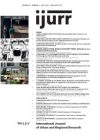The monitoring of changing living conditions in St Petersburg was started in 1989. In 1993 the Finance and Economics Committee of the Government of St Petersburg and a team of researchers from the Institute of Sociology at the Russian Academy of Sciences began collaborating in a study of the levels of socio‐economic differentiation among the population and the priorities in city budget policies. A telephone survey scheme was designed based on representative samples (1000–2500 respondents) of the adult population (18 years and over) and controlled by city district distribution, sex, age, social status and housing. This scheme was implemented regularly with 2–3 month intervals between surveys. It was also undertaken for the purpose of reviewing the general orientation of social politics, decisions on budget priorities, new urgent needs and goals, and the diagnosis and short‐term prognosis of trends and policy moves. Detailed and structured information on the living standards of the St Petersburg population is available from the computerized data‐base, reports, and from the city’s daily newspaper Nevskoe vremya. The studies have demonstrated that economic differentiation in St Petersburg has grown significantly as a result of current reforms (from a 1 to 4 ratio before 1990 to 1 to 10 by the end of 1996). Analysis of the economic characteristics of the population of St Petersburg has revealed that over the course of the past five years there has been rapid differentiation along new lines. At present, wealth and poverty, rather than shared social and professional attributes, tend to unite or separate people. The level of family and personal income determines consumer behaviour, lifestyle, values, cultural attitudes and even individuals’ self‐perception.
Details
Written by:
Tatiana Protassenko
Digital Object Identifier (DOI)
10.1111/1468-2427.00089
About DOI
Read full article as PDF
Read full article as HTML
See the references for this article
